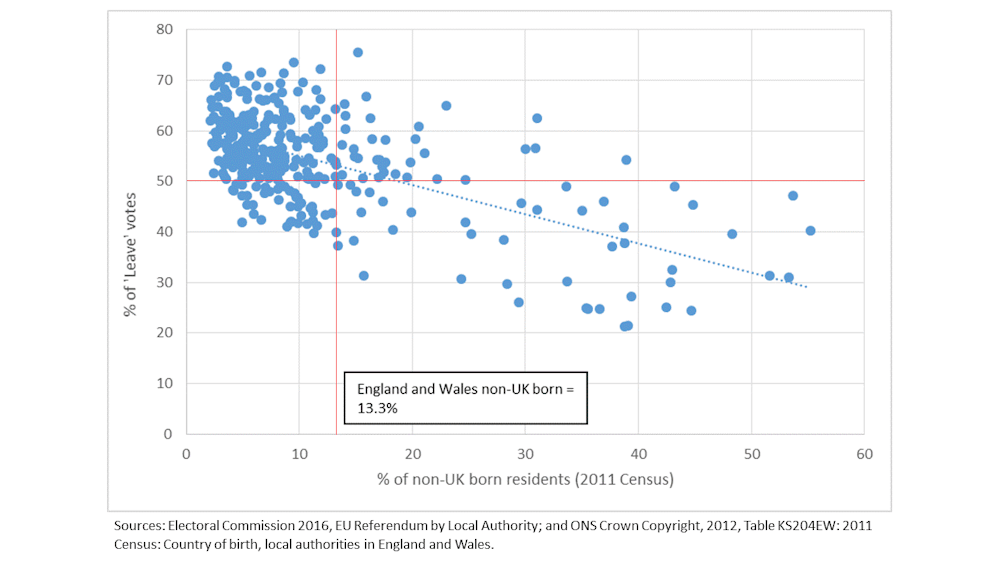Except places with high rates of immigration won't have low numbers of immigrants for very long will they.
The article below provides actual data on net migration and percentage leave vote, showing that the areas with the highest net migration voted remain and the areas with the lowest net migration voted leave. The main reason for this is because it isn't immigration that drove the leave vote but rather the fear of immigration, driven by the right wing media and fake news on social media.
https://www.theguardian.com/politic...migration-fears-were-paradoxical-but-decisive
I did find this data from the economist:
It does show that places with the highest rates of change in foreign born population voted leave by the largest amounts, but it also shows that places where rate of change was negative also voted leave by large amounts.
Looking at these two graphs the negative correlation on the first graph is greater and stronger than the positive correlation on the second, lending support to the argument that it's the fear or perception of immigration that led to high leave votes rather than the experience of it.




